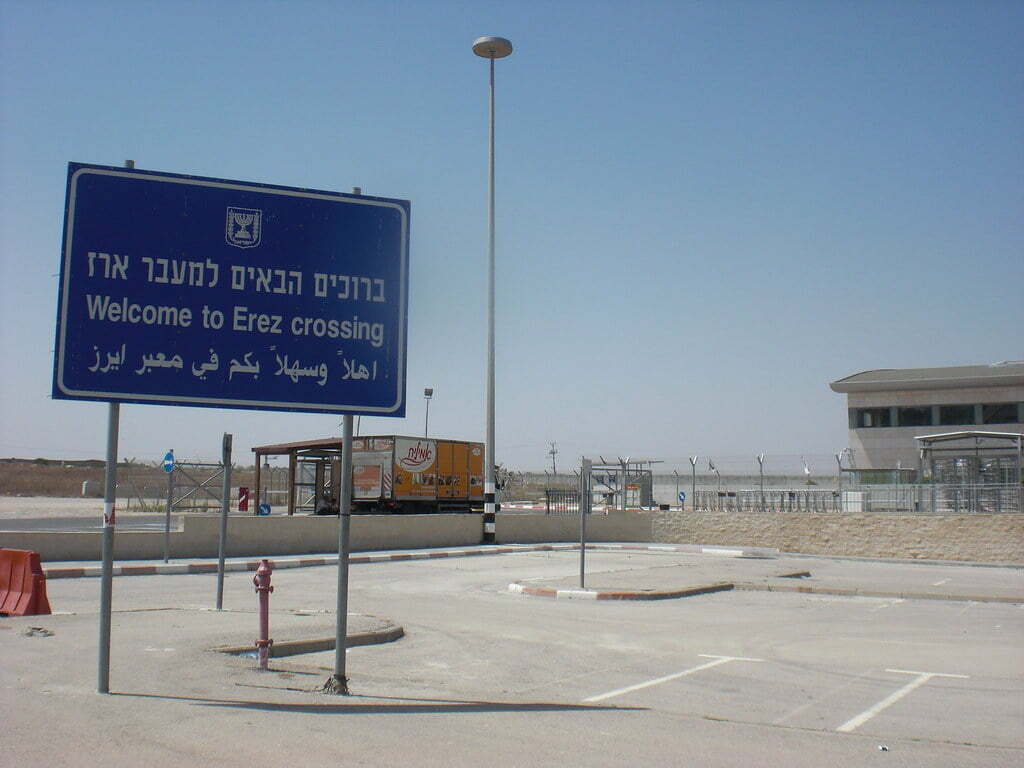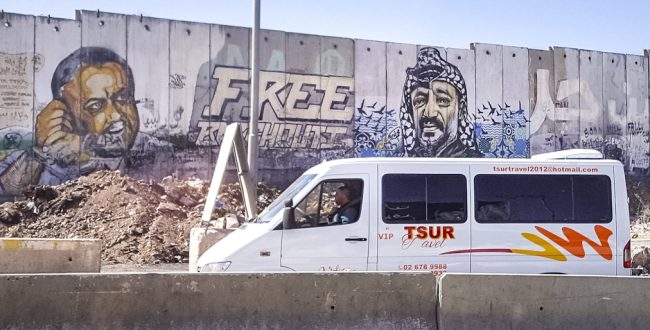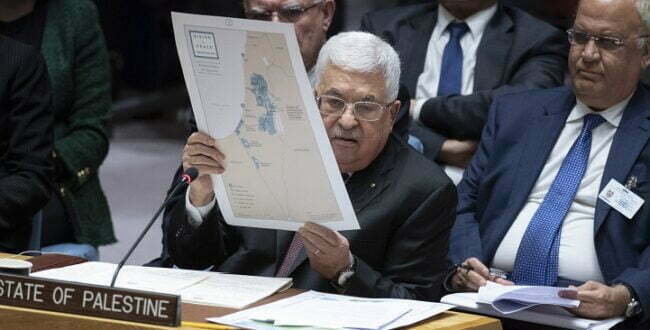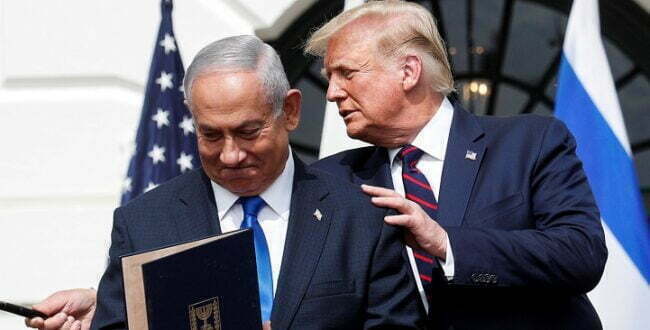Introduction
Israel’s Disengagement from the Gaza Strip in the summer of 2005 was supposed to usher in a new era in Israeli-Palestinian relations, but from its moment of inception, the Disengagement Plan was focused on Israeli interests alone. Very little thought, if any, was given to the Palestinian side and its ability to rebuild the Strip and improve the lives of its residents following nearly 40 years of Israeli rule. “This is a decision that guarantees the future of Israel. This is a decision beneficial to Israel’s security, international standing, Israel’s economy, and the demographics of the Jewish people in the Land of Israel,” stated Prime Minister Ariel Sharon when the government approved the plan in June 2004.
Following the evacuation of about 8,600 Jewish settlers from the Strip and the destruction of their villages, Jewish donors, including United Nations Envoy James Wolfensohn, purchased about 3,000 Israeli greenhouses in the Gaza Strip, in an investment totaling $14 million. The greenhouses, however, were quickly looted by locals, as the Palestinian Police stood by, unable to stop them. This anarchy was a sign of things to come. In the 14 years that have passed since the Disengagement, the living conditions of Gaza’s residents have deteriorated in all spheres and sectors: the economy, health, welfare and personal security.
Israel does not bear sole responsibility for the collapse of the Strip. This collapse was brought about by multiple actors; including the Palestinian Authority government in Ramallah, Hamas’ de-facto rule over the Gaza Strip, the Egyptian regime and the American administration. This research, however, is not focused on assigning blame, but instead seeks to present the current situation in the Strip and propose realistic solutions that could be implemented to improve living conditions there. Gaza’s near-total dependence on Israel places unique responsibility on Israel to solve the problem. This is not merely a moral duty owed to Gaza’s two million residents, but finding such solutions would also be politically wise, as they could prevent a humanitarian crisis and military escalation.
Overview of the Current Situation
Comparing the current conditions in the Gaza Strip to those prior to the Disengagement, or even prior to the start of the second Intifada in September 2000, paints a grim picture. Since the Disengagement, the annual GDP growth in the Gaza Strip stood at 1% only. Since Gaza’s population grows at a rate of 3.5% annually, this translates into a sharp deterioration in the standard of living. In the coming passages, I shall examine this deterioration through several metrics: poverty, unemployment, food security, movement of goods and people, pollution and energy.
Poverty, Unemployment and Food Security
The data with regards to poverty rates in Gaza is contradictory, but even according to the most conservative estimates, the situation in the Gaza Strip is catastrophic. According to data of the Palestinian Central Bureau of Statistics released in May 2018, the poverty rate in the Strip stands at 53% a rise of 36% since 2011. According to these data, there are over one million people under the poverty line in the Gaza Strip, including about 400,000 children. The Central Bureau of Statistics sets the poverty line at $4.6 per day, a sum it calculates as the minimum for covering basic needs based on prices in the Gaza Strip (housing, food, clothing, health, education and transportation). According to this definition, about a third of Gaza’s poor suffer from “deep poverty,” surviving on less than $3.6 per day. These individuals can only pay for the cost of housing, clothing and the food they consume.
Up-to-date data of Palestinian General Federation of Trade unions reveal an even more alarming situation. According to the Federation, Gaza’s poverty rate has crossed 80% and the unemployment rate stands at 54.9%, meaning 295,000 individuals seeking work and unable to find it in the Strip. Although the Palestinian minimum wage is NIS 1,450 ($403), a janitor working in Gaza’s public sector earns only NIS 730 ($203) per month.
According to UN data from 2018, about 68% of households in Gaza suffer from food insecurity, a result of the sharp rise in unemployment. This statistic is even more alarming when taking into account that 69% of Gaza’s residents report receiving food assistance form the government or aid organizations. The Palestinian Statistics Bureau reports that about two percent of Gaza’s children, aged 10-17, are working part-time or full-time to support their families. According to the United Nations’ Relief and Works Agency (UNRWA), in the year 2000just 80,000 Gaza residents relied on UN food aid (about 7% of the Strip’s population at the time). In 2019, the number of those in need skyrocketed to over one million (over half of Gaza’s current population).
The closure imposed by Israel on the Gaza Strip and the policy of denying the entry of laborers into Israel since 2000 are the main reasons for the widespread poverty in the Gaza Strip. But in recent years, additional factors have contributed to the crisis. Israel and Egypt systematically destroyed the smuggling tunnels from Sinai, a major source of revenue for the Strip’s population and the Hamas government, which collected taxes on the goods entering through them. In addition, in the past two years, the Palestinian Authority (PA) President, Mahmoud Abbas, cut the salaries of PA employees by about 30% and forced into retirement about 20,000 civil servants, as part of a series of punitive steps adopted by Abbas against Hamas’ rule in the Gaza Strip.
PA employees in the Gaza Strip no longer receive their salaries regularly, and when they do receive the sums, they are usually 40-60 percent of what they are owed. In February 2019, Tareq Mohammed, a PA employee, told the newspaper al-Araby al-Jadid that the banks are deducting from his salary the electricity bill and debts he has accumulated, leaving him with only NIS 600 ($166) per month. According to a report by the Tony Blair Institute on Gaza’s economy published in November 2018, about 85% of the purchasing power of Gaza families relies on salaries paid to civil servants.
Despite the Disengagement, the limitations placed by Israel on the movement of farmers and fishermen in the areas under its security control also contribute to Gaza’s impoverishment. Israel declared in the Oslo Accords the establishment of a 50-meter wide (164 feet) buffer zone along the Palestinian side of the border fence. In reality, Israel prohibits the entry of civilians into an area that is 300-meter wide (984 feet) and allows farmers to reach up to 100 meters (328 feet) from the fence, but on foot only.
Gaza’s fishing zone, an important source of income for Gaza’s residents, is a bargaining chip Israel uses against Hamas’ rule. In response to the launch of flammable balloons from the Strip toward Israel in mid-May 2019, Israel again reduced the fishing zone from 15 nautical miles (on which it reached an understanding in the negotiations with Hamas on April 1) to just ten nautical miles, and then a few days later, expanded the zone again. The human rights organization Gisha, which tracks freedom of movement in the Gaza Strip, labeled the curtailment of the fishing zone “illegal and immoral collective punishment.”
The crisis in Gaza is affecting the sick too. In May 2019, the Ministry of Health in Gaza declared a shortage of 52% of the required medicine and medical equipment in hospitals. Dr. Madhat Abbas, the Director of the Shifaa’ Hospital in Gaza, reported about shortages of medicine to treat high blood pressure, diabetes, cancer, as well as dialysis equipment. The March 2019 decision of the Palestinian Authority to halt the payments for treating Gaza residents in Israeli hospitals means certain death for many patients in Gaza.
Movement of Goods and People
Over the past 25 years, Israel significantly reduced the ability of Gaza’s residents to enter Israel. Before the second Intifada (in 2000), about 500,000 entries of Gaza residents were recorded per month. In 2017, the monthly average stood at 6,200 entries, according to the monitoring group Gisha.
The general closure imposed on the territories in 1992 became particularly biting two years later, when Israel completed the construction of an electronic fence and a cement wall. With the outbreak of the second intifada in 2000, Israel cancelled many of the entry permits of Gaza residents into Israel and issued very few new permits of this kind. Since 2006, Israel has prevented the entry of laborers from the Gaza Strip to Israel, and only “extraordinary humanitarian cases” are eligible to apply for an exit permit from Gaza, as well as a limited list of businesspeople. In April 2019, about 12,000 entries were recorded from the Gaza Strip, about 3,140 patients and those accompanying them, 7,558 entries of traders and 1,165 “other” entries. By comparison, the same month, there were 1,687,340 entries of Palestinians from the West Bank into Israel, the overwhelming majority of them are daily entries of Palestinian laborers.
The wholesale prohibition on the exit of Gaza residents from the Strip has significant ramifications for the lives of Gaza residents: their ability to meet relatives in the West Bank and Israel and marry residents of those areas, to study abroad or in the West Bank, or to maintain trade relations and friendships with people in the world outside of Gaza.
In the first years following Hamas’ takeover of the Gaza Strip, Israel prevented the entry of most goods to Gaza, allowing only the entry of goods it deemed “necessary for the survival of the civilian population” there. Starting 2007, Israel gradually shut down the Karni, Sufa and Nahal Oz crossings, which were used for the entry of goods, with the Kerem Shalom crossing remaining the only lifeline of the Strip. These days, Israel allow the entry to all civilian goods to the Strip, except a list of items defined as “dual use,” such as X-ray machines, castor oil and surge protectors. This list places significant limitations on the entry of construction materials – which require a host of special permission from a series of bureaucratic instances in Israel – thus hindering Gaza’s reconstruction following recent rounds of conflict.
Israel’s decision to significantly limit export of goods from the Gaza Strip has an even more disastrous impact on Gaza’s economy. Israel prevents the exports of most agricultural goods from the Strip to the West Bank or Israel, the main markets for these goods in the past. Israel does not publish clear criteria explaining which goods can be exported and which cannot. Israel continues to completely block the export of processed foods from the Gaza Strip, such as canned food, products that were 33% of the industrial goods marketed from the Gaza Strip to the West Bank on the eve of the imposition of the Israeli blockade.
The Energy and Water Crisis
The energy crisis in the Gaza Strip directly affects the ability of the enclave’s residents to maintain normal lives, increases the threat of environmental pollution and outbreak of epidemics and is already causing the incidence of diseases, particularly among Gaza’s children. According to UN data, about 120-140 megawatts reaching Gaza’s residents through the power grid are enough to cover only between 27-31 percent of Gaza’s needs (the estimated need is 450 megawatts per day). Gaza residents enjoy between four to six hours of electricity supply per day, and those who can afford it, rely on generators for the rest of the day.
This situation, naturally, prevents Gaza’s residents from maintaining normal daily life, which includes using lighting and essential electrical appliances during all hours of the day. Even worse is the impact on the quality of water in the Strip. The inability to operate the desalination and sewage treatment facilities around the clock leads to massive dumping of sewage into the sea, which then infiltrates Gaza’s groundwater. The over-extraction from Gaza’s aquifer – which is almost the only source of drinking water in Gaza – has increased the levels of salinity, making the water unsafe to drink. According to tests conducted in 2015 in accordance with World Health Organization standards, 96.4% of Gaza’s drinking water is unsafe to drink.
A 2018 report of the RAND Corporation examined the inextricable link between the Gaza electricity crisis and the sharp drop in the quality of water, and as a result, the rise in incidence of diseases. According to the report, over a quarter Gaza’s incidences of disease can be linked to the poor quality of water, which leads to viruses and bacterial infections. Surgeons in Gaza’s hospitals are not always able to wash their hands before starting surgery. According to the report’s authors, under current conditions, the outbreak of an epidemic or a large-scale health crisis in the Strip is only a matter of time. The report recommends that Israel and Egypt improve the power supply to the Strip and the state of its water infrastructure, as well as increase the amount of water sold to Gaza.
According to the NGO EcoPeace, which focuses of cross-border environmental issues, the recurring wars in the Gaza Strip significantly damaged the water, sanitation and hygiene (WASH) services in the Gaza Strip. The ban on entry of certain construction materials and parts is preventing the reconstruction and rehabilitation of this infrastructure. According to the organization, about 90% of Gaza’s residents rely on the supply of bottled water and water delivered in tankers.
Conclusion
The data provided above paint a horrifying picture with regards to the humanitarian situation in the Gaza Strip. This is not an inevitable situation, but rather the result of an intentional policy of several regional actors, including Israel. A simple comparison between the living conditions of the Palestinian population in the West Bank and in Gaza tells the entire story: The GDP growth in the West Bank stands at 6% annually, while in Gaza it is just 1%. There are over one million recorded entries of laborers from the West Bank into Israel every month, as opposed to zero such entries in Gaza. About 100% of the West Bank’s residents drink clean water, while a similar share of Gaza’s population drinks polluted water.
The report by the Tony Blair Institute points to a series of measures that Israel and the international community can take to significantly improve living conditions in Gaza, even in the absence of reconciliation between Fatah and Hamas. According to the Institute, opening Gaza’s border crossings to regular entries and exits of goods and people, paying the salaries of civil servants, and granting Gaza residents work permits in Israel can improve Gaza’s GDP by 39% and increase the purchasing power of the Strip’s residents by a whopping 55%. On the other hand, according the report’s authors, increasing financial assistance to Gaza – the preferred solution of the international community and Israel to date – has only short-term and limited effect on the lives of Gaza’s two million inhabitants.
Israel can decide now whether it wishes to reconstruct and rehabilitate the Gaza Strip for the benefit of its residents and for Israel’s benefit. The alternative is to let Gaza continue languishing in poverty and disease. The latter decision will undoubtedly lead to incessant rounds of fighting, which in turn will endanger all inhabitants of this land.


















